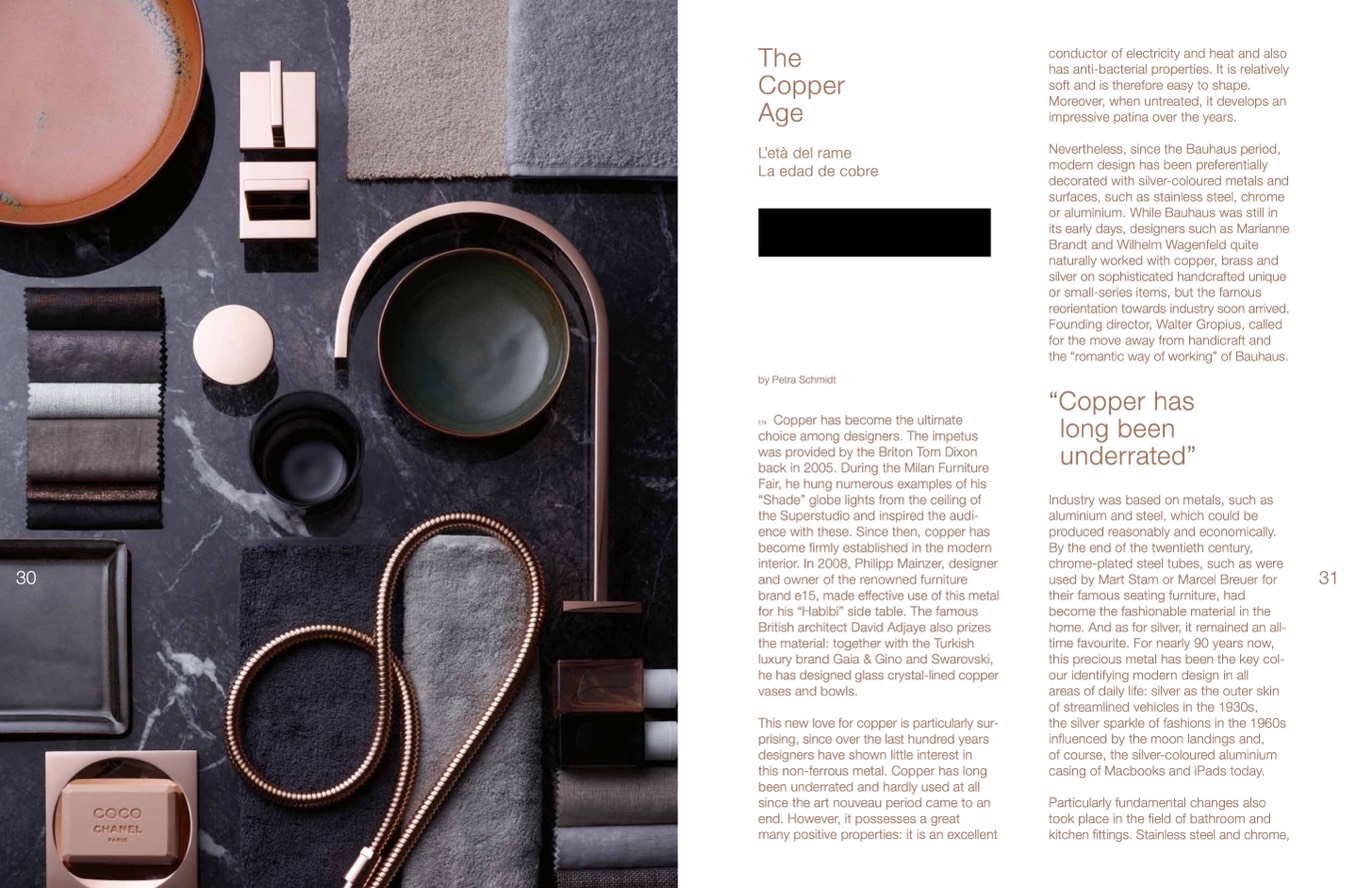
The
Copper
Age
L’età del rame
La edad de cobre
conductor of electricity and heat and also
has anti-bacterial properties. It is relatively
soft and is therefore easy to shape.
Moreover, when untreated, it develops an
impressive patina over the years.
Nevertheless, since the Bauhaus period,
modern design has been preferentially
decorated with silver-coloured metals and
surfaces, such as stainless steel, chrome
or aluminium. While Bauhaus was still in
its early days, designers such as Marianne
Brandt and Wilhelm Wagenfeld quite
naturally worked with copper, brass and
silver on sophisticated handcrafted unique
or small-series items, but the famous
reorientation towards industry soon arrived.
Founding director, Walter Gropius, called
for the move away from handicraft and
the “romantic way of working” of Bauhaus.
“Copper has
long been
underrated”
Industry was based on metals, such as
aluminium and steel, which could be
produced reasonably and economically.
By the end of the twentieth century,
chrome-plated steel tubes, such as were
used by Mart Stam or Marcel Breuer for
31
their famous seating furniture, had
become the fashionable material in the
home. And as for silver, it remained an all-
time favourite. For nearly 90 years now,
this precious metal has been the key col-
our identifying modern design in all
areas of daily life: silver as the outer skin
of streamlined vehicles in the 1930s,
the silver sparkle of fashions in the 1960s
influenced by the moon landings and,
of course, the silver-coloured aluminium
casing of Macbooks and iPads today.
Particularly fundamental changes also
took place in the field of bathroom and
kitchen fittings. Stainless steel and chrome,
30
and owner of the renowned furniture
brand e15, made effective use of this metal
by Petra Schmidt
EN
Copper has become the ultimate
choice among designers. The impetus
was provided by the Briton Tom Dixon
back in 2005. During the Milan Furniture
Fair, he hung numerous examples of his
“Shade” globe lights from the ceiling of
the Superstudio and inspired the audi-
ence with these. Since then, copper has
become firmly established in the modern
interior. In 2008, Philipp Mainzer, designer
for his “Habibi” side table. The famous
British architect David Adjaye also prizes
the material: together with the Turkish
luxury brand Gaia & Gino and Swarovski,
he has designed glass crystal-lined copper
vases and bowls.
This new love for copper is particularly sur-
prising, since over the last hundred years
designers have shown little interest in
this non-ferrous metal. Copper has long
been underrated and hardly used at all
since the art nouveau period came to an
end. However, it possesses a great
many positive properties: it is an excellent









